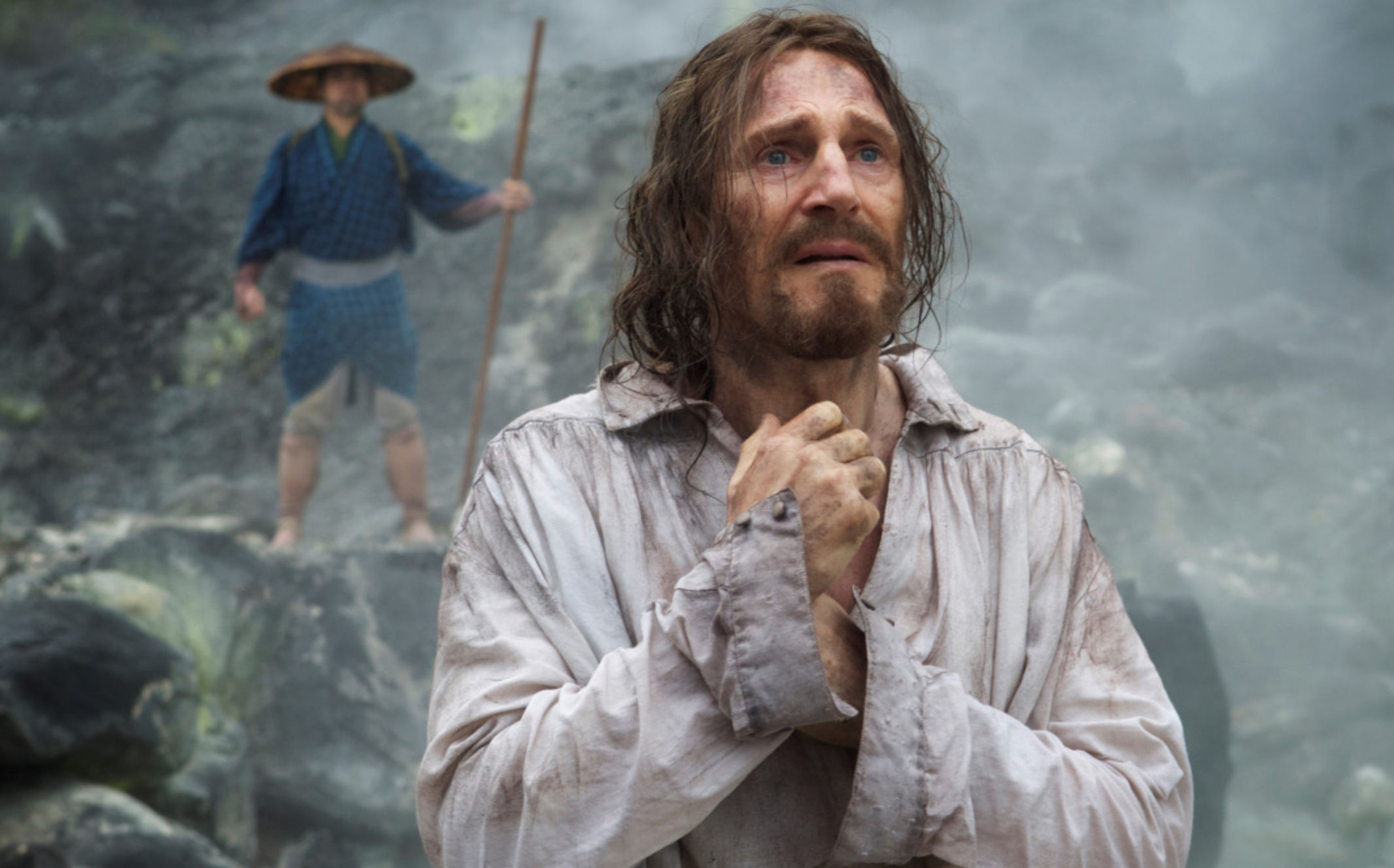
Martin Scorsese’s Silence (2016) explores the complex nature of faith through the quest of two priests (Andrew Garfield and Adam Driver) to reunite with their former mentor, Father Ferreira (Liam Neeson). Through the two hour forty-one minute run time Silence proves to be Martin Scorsese’s best film since his 1990 crime film Goodfellas. With Silence Scorsese makes his biggest stylistic jump, trading the excessive and aggressive nature of The Wolf of Wall Street (2013) for a master class in mediation and restraint.
Arguments could be made for the likes of The Aviator and Gangs of New York as Scorsese’s best work since Goodfellas but nothing shows a master filmmaker at the height of his power more than Silence.
Silence is a lesson in cinematography, narrative structure, acting, thematic exploration and when viewed as a cohesive whole creates a film that will leave the viewer silent, contemplating the timeless questions that Scorsese beautifully conveys. Below are six reasons why Silence is indeed the best Scorsese film since Goodfellas.
1. A Powerful Meditation On The Nature Of Faith

Despite Scorsese’s very clear relationship to the catholic church Silence never comes across as a biased view on Catholicism. Rather Silence comes across as an objective description on Catholicism.
Silence may seem heavy handed at time due to the daunting religious questions that are very obviously asked throughout the film but that is part of what makes Silence such a powerful view on religion. Not very often does a film tackle such timeless themes in such a direct, almost abrasive manner. It puts philosophy over narrative, forcing the viewer to reconsider everything they know about religion.
Scorsese never gives a moment for the audience to breathe, not until the film is over does the audience have any time to process the barrage of philosophical questions regarding faith. It is a cinematic experience in it’s truest form, it is a film designed to be seen in the theatre. The philosophical pondering on the car ride home is arguably the most powerful aspect of Silence.
Scorsese’s work is so direct and concise that it creates the type of analysis that is indescribable, completely different to every viewer. The title of “Silence” is so fit for the film since it is a film that evokes silence. When word’s can’t describe an emotional impact created by a film, critique becomes superfluous as the director has reached their ultimate goal. Scorsese succeeds in this unlike any of his film since Goodfellas.
Silence rivals the impact left on viewers after viewing Taxi Driver and Raging Bull. It is Scorsese at his most visceral, not visceral like the excess of The Wolf of Wall Street, but visceral in its raw unrelenting emotion, which all returns to the power of faith that Scorsese portrays throughout Silence.
2. Andrew Garfield’s Fantastic Performance
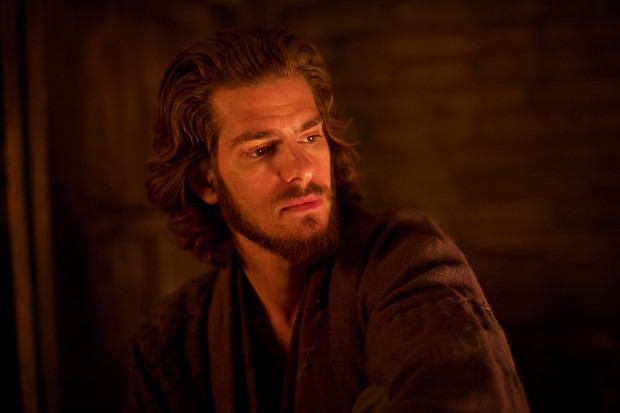
At thirty-three Andrew Garfield is a highly underrated actor. Marred by the disappointing The Amazing Spider Man Andrew Garfield never gained the recognition he deserved with strong performances in the likes of The Social Network and 99 Homes.
In Silence, Scorsese takes full advantage of the young actors talents, utilizing his innocent face to portray a young priest struggling with moral justification versus religious convention. Garfield’s performance is more akin to early De Niro Scorsese collaborations than the modern DiCaprio Scorsese relationship. Garfield’s performance is an exercise in subtlety and restraint.
Garfield puts on a facade as a mature, priest who seems to have the answer to every problem, but due to the subtlety and restraint, when the facade is broken, the moment is even more powerful. In comparison to DiCaprio’s bombastic style in the likes of The Wolf of Wall Street, Garfield’s restraint creates any moments of bombastic acting feel cathartic, a release of the stress and questioning that the young priest goes through.
Scorsese deserves much of the acclaim for Garfield’s performance, Garfield has shown strong acting ability in his career, but nothing that supports the possibility of him carrying a three hour religious epic. And this is what Scorsese seems to do so well, transforming good actors into great actors, taking De Niro from a good character actor, to a powerhouse, transforming a young, heart throb like DiCaprio into one of the most celebrated actors of the 21st century.
Maybe it should not be a surprise that Garfield’s performance is so great but even in comparison to some of the fantastic performance in Scorsese’s 21st century filmography, it rivals the likes of Day-Lewis in Gangs of New York and DiCaprio in The Wolf of Wall Street. Silence proves Garfield to be an actor that should most certainly be kept note of for a very long time.
3. A Masterclass in Aesthetics
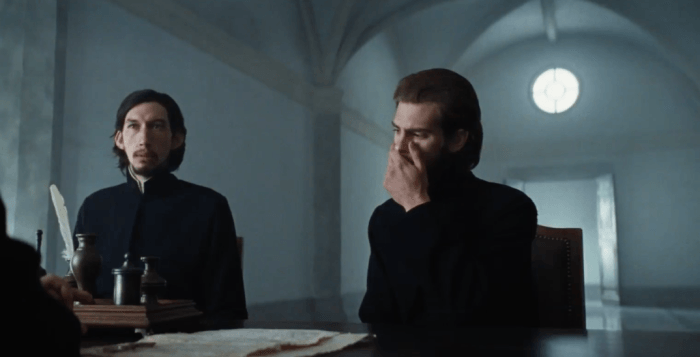
Rodrigo Prieto’s cinematography in Silence is gorgeous, stable, unforgiving and owes a lot to the films of Yasujiro Ozu. The film opens up with beautiful shots of Japanese hot springs billowing steam into the sunny landscape.
The shots are locked down, forcing the viewer to fully take in the frame as if it is a painting, trading quick cutting for longer shots. Rodrigo Prieto’s cinematography is not groundbreaking and nor should it be. Silence is not a masterclass in experimental aesthetics, rather it is a masterclass in how aesthetics should serve narrative and the inextricable link between aesthetics and form.
The cinematography serves the narrative, it does not distract from it. The style serves the substance, enhances the substance in a manner that is subtle. The aesthetics of Silence enhance the exploration of faith, Prieto stays out of the way, he allows the film to be a meditative experience.
Much of the aesthetics enhancing the meditative experience is owed to the use of the “tatami” shot. A term coined by Yasujiro Ozu, the tatami shot is the tripod being at the level of or lower than the stance when praying. The tatami shots bring the audience to their knees, creates a sense of unity with the subject that is praying, it is the filmic version of meditating, allowing a subjective look into the life of the priests, or whomever is praying.
4. A Stylistic Shift: From Excess To Restraint
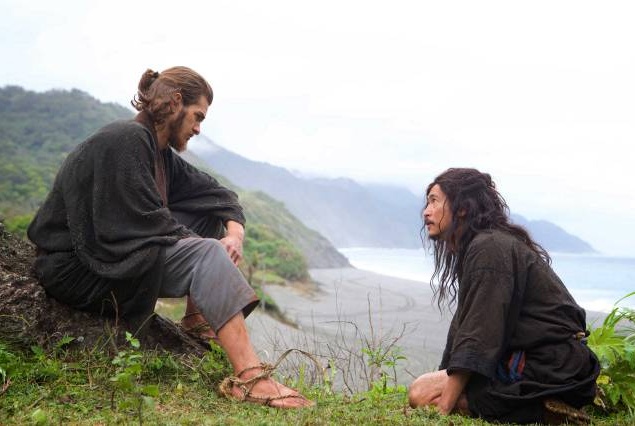
Silence is an epic film, as is The Wolf of Wall Street, The Aviator and Gangs of New York. But Silence may be the least epic of the films previously mentioned. Silence is an exercise of restraint, from the cinematography, to the acting, to the script.
Silence is stripped of the excess that was so important to previous Scorsese works. It marks a complete stylistic shift from a director nearing the twilight of his career, which is quite the feat. Directors with distinct stylistic qualities tend to become even more trapped in their own style, like Quentin Tarantino, Terrence Malick and Wes Anderson.
Being linked to a style is by no means a detriment, rather the risk for Scorsese to do a complete reversal shows a director who will do whatever it takes for the style of the film to serve the story. In Silence, Scorsese puts tone and meaning above narrative. The narrative compels the audience to watch but by the middle of the film the plot is no longer of concern.
By the middle of the film, the questions Scorsese is asking about faith take hold, no longer does the search for Ferreira matter, to the protagonist or to the viewer. In this sense, Silence is poetic, subtle, restrained, a chance for personal reflection, an entirely subjective experience, showing a master filmmaker willing to take risk to serve his greater vision.
5. Scorsese Stares Faith In The Face
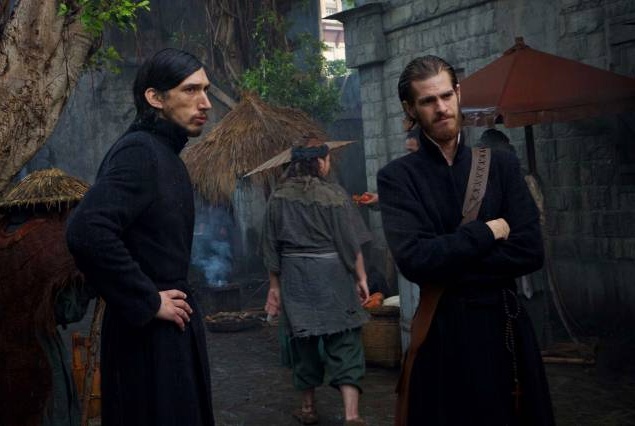
There is not a theme more prevalent in Scorsese’s body of work then faith. From Who’s That Knocking On My Door to The Wolf of Wall Street, faith is either there deep in the subtext or very direct but either way it is a defining aspect of Scorsese’s career. Silence is Martin Scorsese’s confrontation with faith, directly asking the questions that have seemed to be haunting him.
Thus Silence is an incredibly personal film, but yet it is also so universal due to it’s timeless questions. The viewer does not need to be inside Scorsese’s head to understand the film which is the flaw of so much art with such a personal importance to the creator.
Silence is a very personal experience, since the nature of faith is completely subjective, based on an infinite number of variables established throughout one’s life. Therefore Silence resonates entirely different depending on the viewer, which is astounding due to Silence being such a highly personal film to Scorsese and yet he is able to take the viewer on a philosophical journey that is completely individual to every viewer.
6. Scorsese’s Most Powerful Use Of Violence

Scorsese has used violence very well throughout his prolific career but never has the violence been so unrelenting and visceral like it is in Silence. The camera does not waver, it does not shake, nor are there any editing tricks to cover up the violence and torture.
Channeling Haneke, Scorsese’s objective camera shows all, it forces the viewer to live in real time with the torture. Some of the most difficult scenes to watch lack any gore. The scene in which three Japanese Christians are tied to crosses repeatedly becoming submerged in the waves of the pacific until death is deeply moving.
Not only does it embody the suffering of Jesus Christ on the cross but it accurately describes the power of faith in these characters lives, they will suffer the most extreme torture to death without denouncing their love for god. The last member alive of the three sings a hymn as the water bashes against him. A hauntingly beautiful moment, that juxtaposes the beauty of the hymn with the unwavering view of violence.
Much like the rest of the film, the violence is not abrasive, it is subtle, which makes it all the more haunting, the solitude of the Christians in torture makes the torture scenes eerily quiet, whether it is hearing the waves crash against the crosses, or the blood dripping from the incision in somebody’s head. This silence in within the torture creates an even more visceral experience than some of the more visually and sonic aggressive violence of Scorsese’s earlier work.
Author Bio: Reade Wildman is an experimental musician and independent filmmaker out of Chicago. Most of his time is spent writing music, working on films and watching movies or playing with his cat, Jean-Luc.